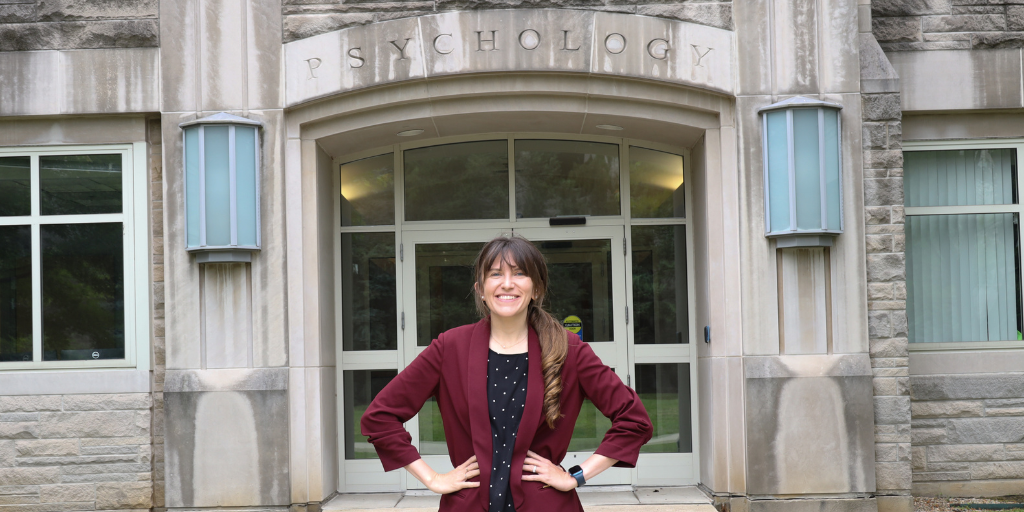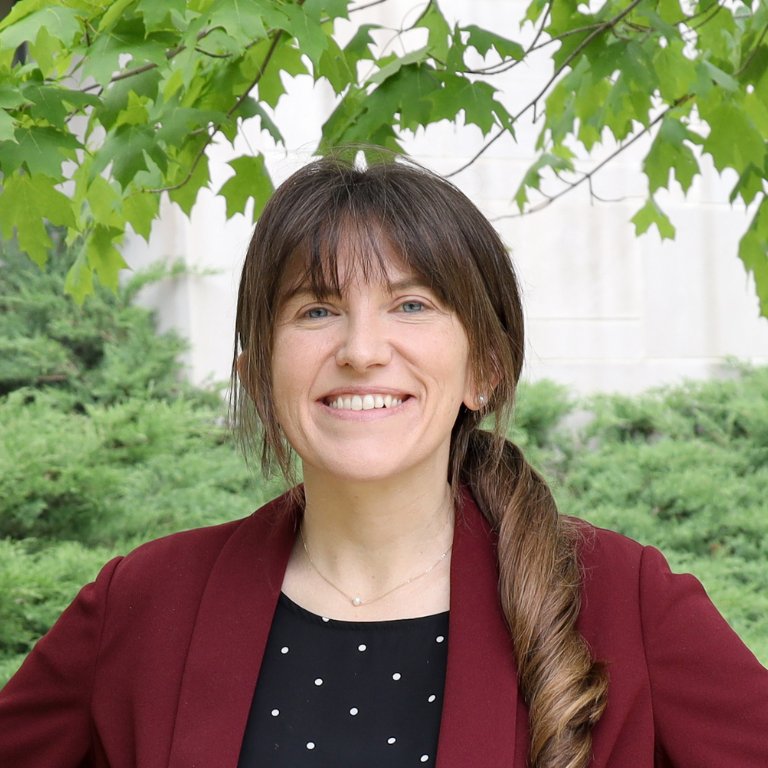Newly appointed PBS assistant professor Sydney Trask did not always plan to become a scientist. She began her undergraduate education at Kent State University in Ohio seeking to avoid the required science or math course at all costs. “I was a journalism major, and I thought, ‘Why would I need that?’” she says.
To her relief, she discovered that in lieu of math, she could take a philosophy course on basic logic. Much to her surprise, however, she found the class with its arguments and syllogisms riveting and had a real knack for the work and the kind of systematic thinking it required. Seeing her interest, the professor steered her toward another course, this time a psychology class on learning theory. It was a notoriously hard class on basic behavioral experimental designs, how to test hypotheses, and how to apply different mathematical models to come up with behavioral predictions. Again, it clicked. And this time the professor asked her to join his lab, which she agreed to do. “I was an unhappy journalism major taking truly random classes,” she recalls. What did she have to lose?
Her first day in the lab was not exactly promising. Handling rats was so terrifying to her that she left early, unsure if she could return. But the next day she summoned up the courage to see the commitment through. In the coming weeks she came to love the work she was doing and at that point, she says, “I changed my major to psychology, decided I wanted to go to graduate school, and signed up for a bunch of neuroscience classes.”
“The neuroscience of aging” F100 initiative
Following graduate school at the University of Vermont and post-doctoral work at the University of Wisconsin – Milwaukee, she landed her first job as a faculty member at Purdue University. Then came the job announcement for her current position, part of the Faculty 100 Initiative to develop faculty strengths in different areas, in this case the Neuroscience of Aging and Central Nervous System Disease, and the nature of a position defined by its collaborative potential, had a great appeal.
This past December, she and her husband moved to Bloomington with their four-month-old son and two big dogs in tow. Trask is now putting the finishing touches on her lab, where she will continue to pursue research on age-related changes in memory function, particularly with respect to memory retrieval and cognitive flexibility.
As she explains it, “I’m interested in changes that occur in the molecular processes that precipitate protein accumulation. If we can intervene in these processes during middle age, maybe we can prevent age-related cognitive decline.”
Humans, for example, instead of showing a linear decline in cognitive function throughout the lifespan, typically show a precipitous decline starting around age 65. And yet, she states, “not everybody shows the same trajectory,” an aspect in which she is “super-interested.”
Trask points out that students are often drawn to the study of age-related memory decline. But the other critical part of this work is learning. Basic learning processes and how they change with age are an integral part of memory-related research. “You can’t have learning, if you don’t have memory. And I think really to understand how learning and memory change with age, you have to understand first how they function at baseline.”


 The College of Arts
The College of Arts